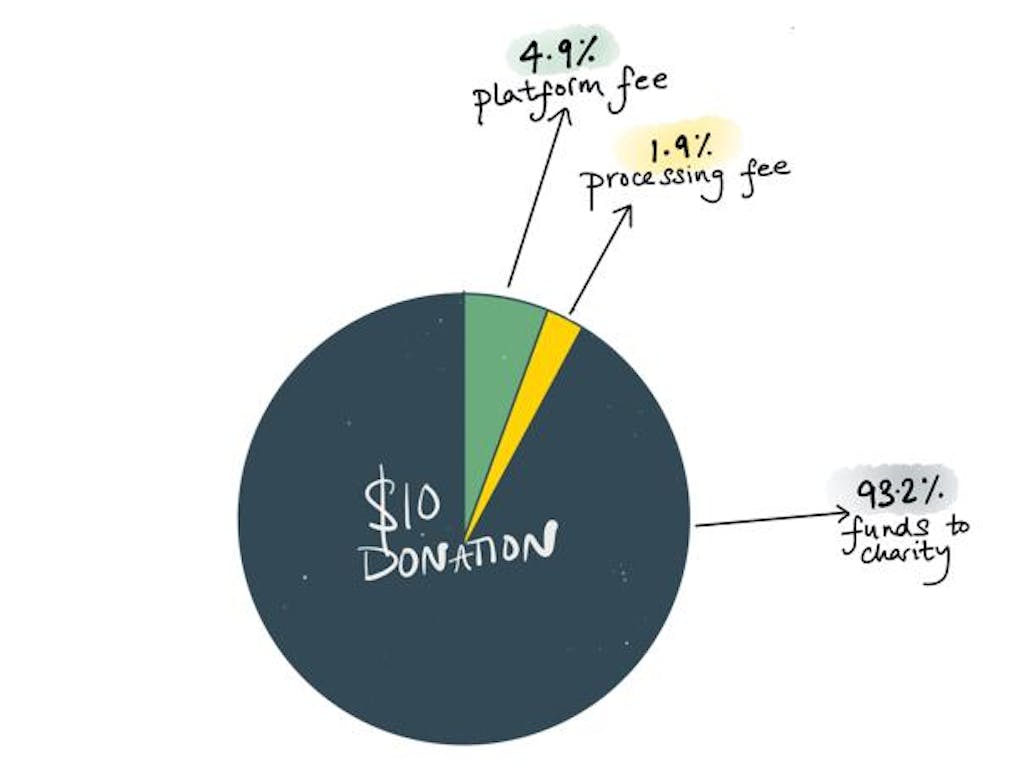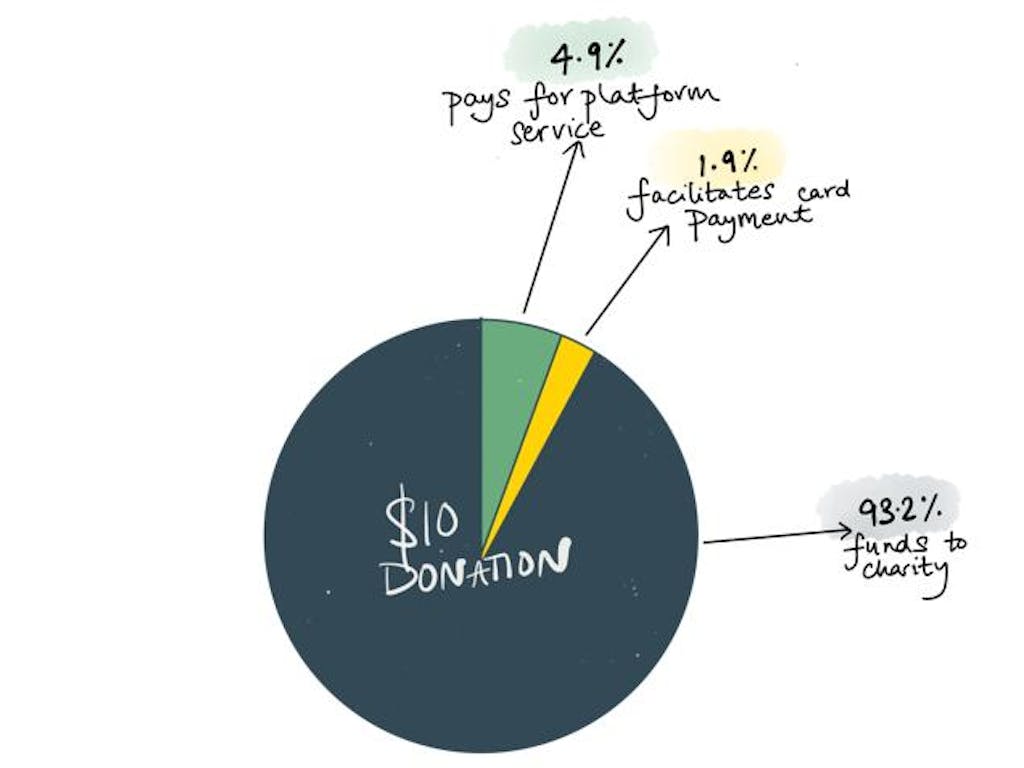When donating to a non-profit, you’d hope that 100% of your donation reaches your chosen cause, right?
Well, irrespective of your desired outcome, the reality is (as with most services) giving, too, has a cost attached. We call this cost, the cost of digital giving.
What is the cost of digital giving?
As a rule of thumb, the cost of digital giving is made up of two parts:
- Processing Fee
With possibly a - Platform Fee
The cost of digital giving looks a little like this...

Both of these costs are variable and are dependent on the way you pay (e.g) where you donate and which country you and the nonprofit are in! Complicated already?!
Let’s dive in...
Part 1: Platform Fee:
When you donate to a cause via a fundraising platform, you’ll often have to pay a platform fee. Platform fees are charged by the platform for the use of their product.
Examples of platform fees:
How necessary is a platform fee?
+ Pros: Platform fees help to cover the day to day running costs of the platform, enabling them to continue their valuable work in funding underfunded causes.
- Cons: Platform fees are paid out of donations made to non-profits, meaning charities can miss out on valuable funds.
Part 2: Processing Fee:
Processing fees cover the cost of getting money from the users' bank account to the charities bank account… sounds simple, but with many third parties involved, things can get quite complicated.
Examples of processing fees:
How necessary is a processing fee?
+ Pros: Payment processors help safely move funds between donors and non-profits.
- Cons: Processing fees are paid out of donations made to non-profits, meaning charities can miss out on valuable funds.
The below diagram helps to explain why the cost of digital giving is in place:

Whilst platform and processing fees can vary depending on the individual platform and payment processor, either way, the cost of giving comes at a cost to the non-profit.
What does the cost of digital giving mean for non-profits?
+ Pros: Platform & processing fees provide a method for charities to:
- receive digital payments
and also - drive revenue streams for businesses creating innovative new ways of giving
- Cons: 100% of the funding isn’t able to reach the end cause. Though the cost of giving is only a small percentage of every donation, at scale, the financial impact on non-profits is pretty significant.
So, how do we get the cost of giving down to zero?
- Payment processing: Philanthropic moves from payment providers
- Payment processing: Open banking
Fortunately, recent exciting innovation in FinTech shows promise of a world where we can get the cost of giving down to zero; a world where we prioritise and empower good causes with the tools and systems they need in order to thrive in the era of technology within which they exist.
Want to see which businesses are revolutionising giving? Click here.




